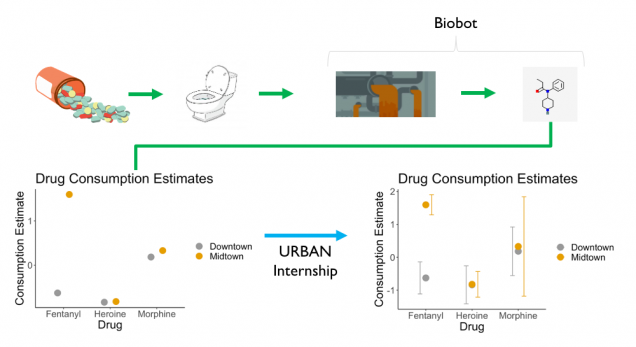Detecting Drug Consumption with Wastewater
Project Partner: Biobot Analytics, Winter and Spring 2020
Project Summary: Wastewater samples collected from city sewer networks can provide useful information about population health, from prevalence of COVID-19 to the amount of illicit drug consumption within a community. But how accurate are estimates derived from wastewater data? David helped Biobot Analytics quantify the uncertainty around their opioid usage estimates using Bayesian statistics in order to support public health interventions. David valued the opportunity to use statistics to tackle challenging public problems and learned what working at a start-up company is like. He also created a website on GitHub explaining his statistical approach. Following the internship, David continued working on a contract project with Biobot Analytics as they pivoted to tackle the COVID-19 pandemic.

Project Deliverables: Created a GitHub website explaining how to use hierarchical modeling to incorporate the results of previous scientific research into a current study, using the work with Biobot as an example.
